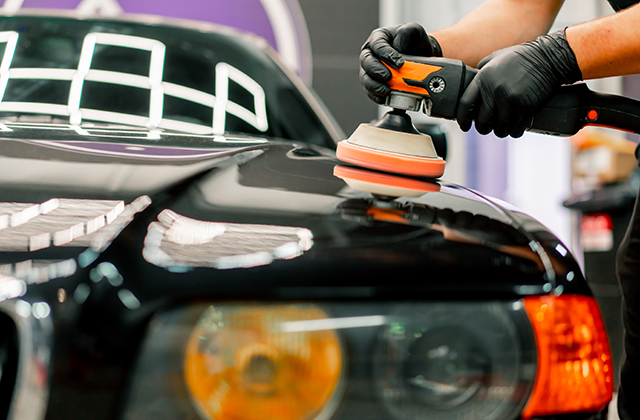In the realm of automotive detailing, ceramic coatings have emerged as a game-changer, providing a remarkable level of protection and shine for vehicles. This innovative technology has gained widespread popularity among car enthusiasts and professionals alike. But what exactly makes ceramic coatings so effective? In this article, we will delve into the science and technology behind ceramic coatings and explore why they have become a sought-after solution for maintaining a car’s pristine appearance. We will also touch upon the availability of ceramic coating services in Sydney, a city known for its car culture.
Understanding Ceramic Coatings
Ceramic coatings are liquid polymers that, when applied to a car’s exterior, chemically bond with the factory paint, forming a protective layer. Unlike traditional waxes and sealants, which sit on the surface and wear off relatively quickly, ceramic coatings create a semi-permanent or permanent bond with the paint. This bond is what provides the long-lasting protection and superior shine that ceramic coatings are known for.
The Science Behind Ceramic Coatings
1. Chemical Composition
Ceramic coatings are primarily composed of silicon dioxide (SiO2) or silica, which is derived from quartz or sand. Some advanced formulations may also include titanium dioxide (TiO2) for enhanced durability and UV resistance. When applied, these compounds undergo a chemical reaction with the paint surface, creating a rigid, transparent layer.
2. Hydrophobic Properties
One of the most celebrated features of ceramic coatings is their hydrophobicity. The term “hydrophobic” means water-repellent. The molecular structure of the coating creates a surface that causes water to bead up and roll off effortlessly. This property not only keeps the car cleaner for longer but also makes washing easier, as dirt and grime are less likely to stick to the surface.
3. Resistance to Contaminants
Ceramic coatings provide a robust defense against various environmental contaminants. The dense, cross-linked structure of the coating acts as a barrier against pollutants, bird droppings, tree sap, acid rain, and even some chemical stains. This resistance helps prevent these contaminants from etching into the paint and causing damage.
4. UV Protection
UV rays from the sun can cause significant damage to a car’s paint over time, leading to oxidation and fading. Ceramic coatings offer superior UV protection by blocking these harmful rays, thus preserving the paint’s original color and gloss.
5. Scratch Resistance
While not completely scratch-proof, ceramic coatings do provide a measure of resistance against minor scratches and swirl marks. This is due to the hardness of the coating, which can vary between products but typically ranges from 7H to 9H on the pencil hardness scale. This added hardness helps protect the underlying paint from everyday wear and tear.
The Technology of Application
1. Surface Preparation
The effectiveness of a ceramic coating is highly dependent on proper surface preparation. This includes thorough washing, decontamination, and often a process called paint correction. Paint correction involves removing any imperfections such as swirl marks, scratches, or oxidation from the paint to ensure a smooth surface for the coating to bond with.
2. Application Process
Applying a ceramic coating requires precision and attention to detail. The liquid coating is applied in small sections using a microfiber applicator pad. It must be spread evenly and allowed to cure according to the manufacturer’s instructions. Multiple layers may be applied for added protection and depth of gloss.
3. Curing Time
After application, the coating needs time to cure and bond with the paint. This can range from a few hours to a couple of days, depending on the product and environmental conditions. During this period, it is crucial to keep the car dry and free from contaminants to ensure a proper bond.
Maintenance and Longevity
1. Regular Washing
Even with a ceramic coating, regular washing is essential to maintain its effectiveness. Use a pH-neutral car shampoo and the two-bucket method to minimize the risk of scratching. Avoid automatic car washes with abrasive brushes, as these can damage the coating.
2. Avoiding Harsh Chemicals
When cleaning your car, steer clear of harsh chemicals and detergents that can degrade the coating. Stick to products specifically designed for ceramic-coated surfaces.
3. Periodic Inspections
Regularly inspect your car for signs of wear or damage to the coating. Depending on the environment and usage, you might need to reapply the coating or perform touch-ups every few years.
4. Professional Maintenance
Consider professional maintenance services to keep your coating in top condition. In cities like Sydney, numerous detailing shops specialize in ceramic coating. Searching for “ceramic coating Sydney” will yield a variety of options for professional care, ensuring your car remains protected and gleaming. Once you find a very informative post you can apply it gradually in your car.
Conclusion
The science and technology behind ceramic coatings make them an exceptional choice for protecting and enhancing your car’s paintwork. From their hydrophobic properties to their resistance against UV rays and contaminants, ceramic coatings offer numerous benefits that traditional waxes and sealants cannot match. By understanding the composition, application process, and maintenance requirements, car owners can make an informed decision about investing in this advanced form of paint protection. For those in Sydney, the availability of professional ceramic coating services ensures that your vehicle can achieve and maintain a stunning, long-lasting shine.


